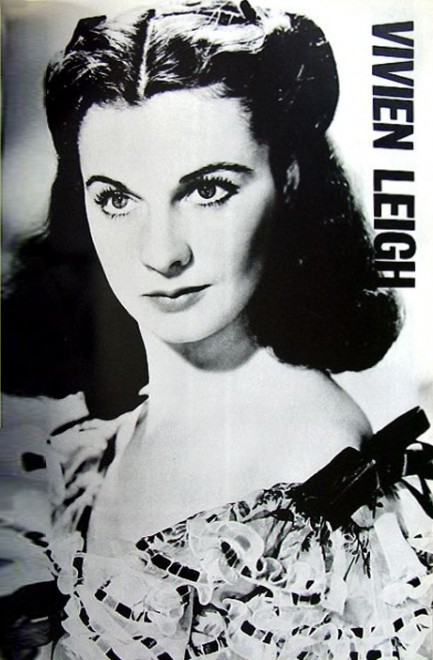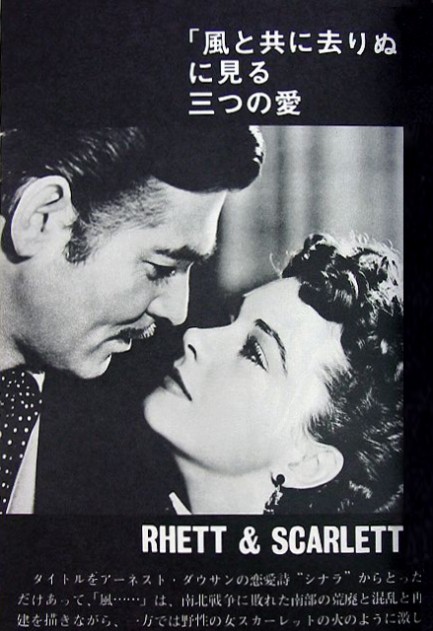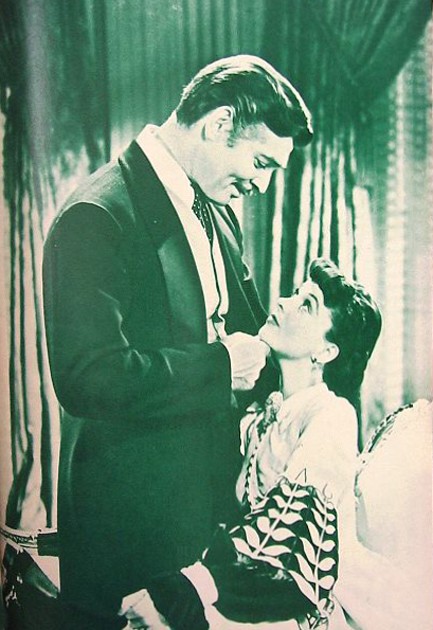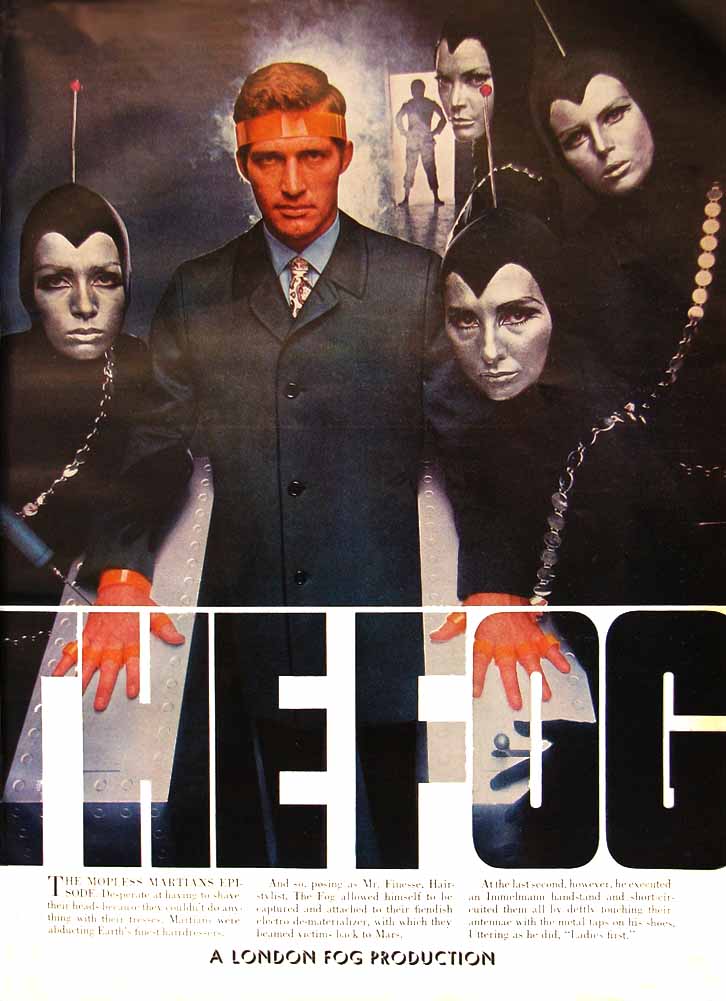| Hollywoodland | Sep 9 2023 |

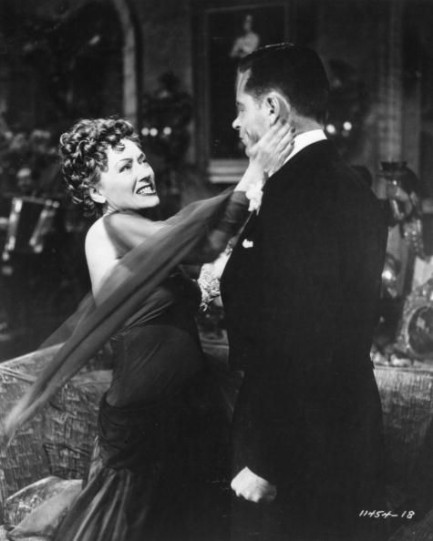
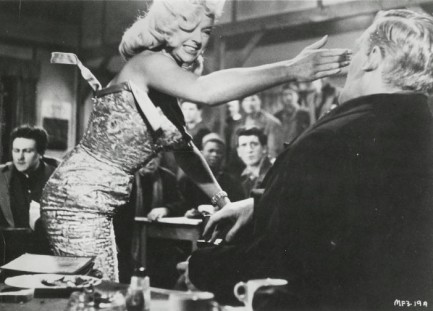
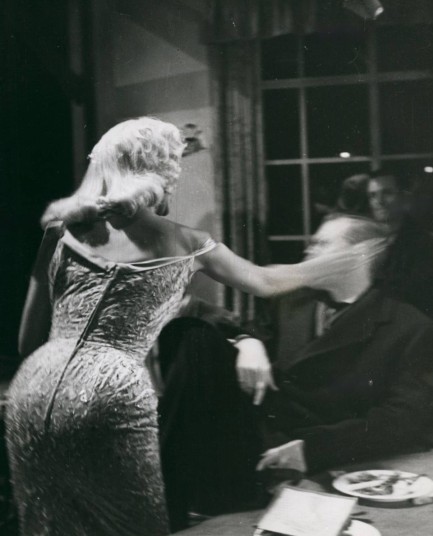 Diana Dors smacks Patrick Allen blurry in 1957's The Long Haul.
Diana Dors smacks Patrick Allen blurry in 1957's The Long Haul.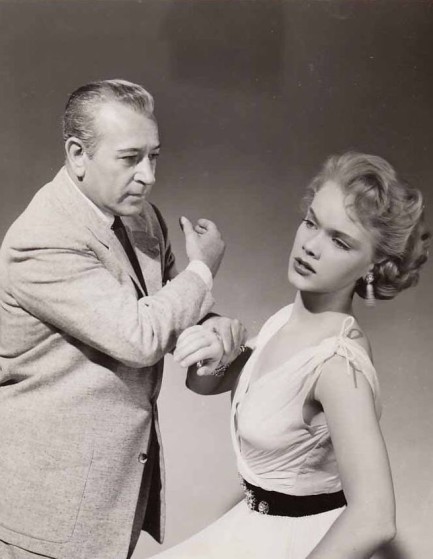 Mob boss George Raft menaces Anne Francis in a promo image made for 1954's Rogue Cop.
Mob boss George Raft menaces Anne Francis in a promo image made for 1954's Rogue Cop.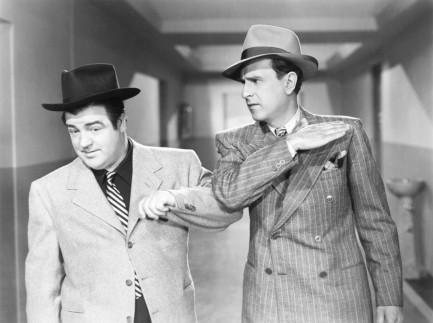 Bud Abbott gets aggressive with Lou Costello in 1945's Here Come the Co-Eds.
Bud Abbott gets aggressive with Lou Costello in 1945's Here Come the Co-Eds.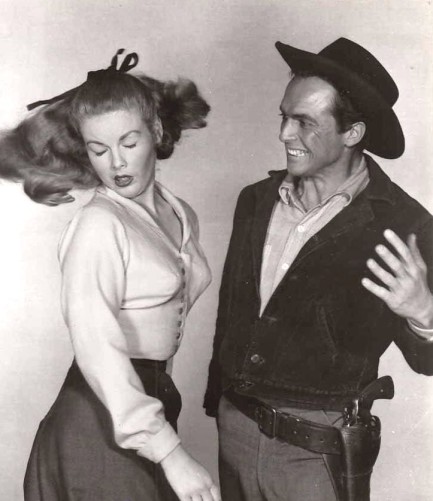 Jo Morrow takes one from black hat Jack Hogan in 1959's The Legend of Tom Dooley.
Jo Morrow takes one from black hat Jack Hogan in 1959's The Legend of Tom Dooley.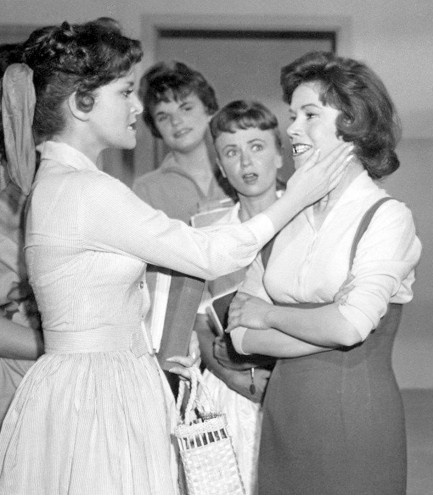 Chris Robinson and Anita Sands get a couple of things straight about who's on the yearbook committee in Diary of High School Bride.
Chris Robinson and Anita Sands get a couple of things straight about who's on the yearbook committee in Diary of High School Bride.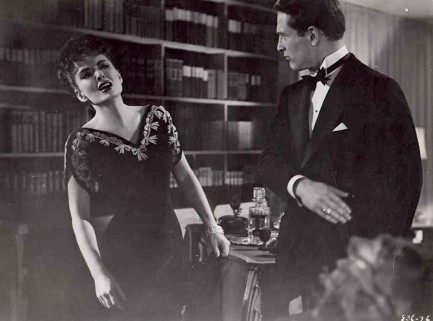 Paul Newman and Ann Blyth agree to disagree in 1957's The Helen Morgan Story.
Paul Newman and Ann Blyth agree to disagree in 1957's The Helen Morgan Story.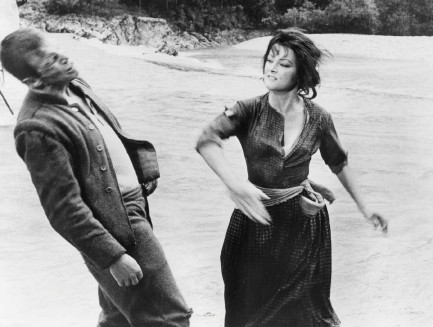 Verna Lisi shows Umberto Orsini who gives the orders in the 1967 film La ragazza e il generale, aka The Girl and the General.
Verna Lisi shows Umberto Orsini who gives the orders in the 1967 film La ragazza e il generale, aka The Girl and the General.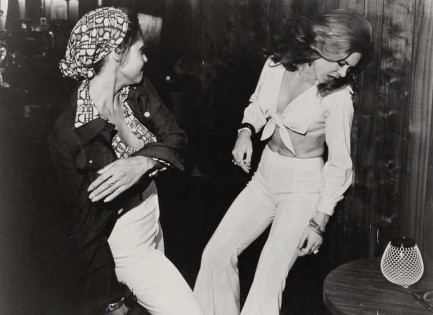 What the fuck did you just call me? Marki Bey slaps Betty Anne Rees loopy in the 1974 horror flick Sugar Hill.
What the fuck did you just call me? Marki Bey slaps Betty Anne Rees loopy in the 1974 horror flick Sugar Hill.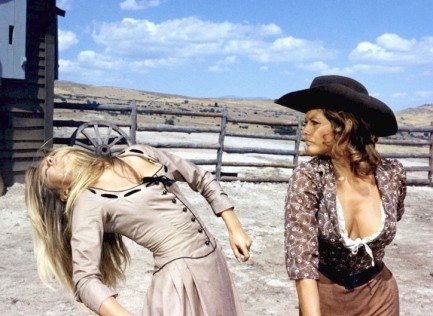 Claudia Cardinale slaps (or maybe punches—we can't remember) Brigitte Bardot in the 1971 western Les pétroleuses, known in English for some reason as The Legend of Frenchie King.
Claudia Cardinale slaps (or maybe punches—we can't remember) Brigitte Bardot in the 1971 western Les pétroleuses, known in English for some reason as The Legend of Frenchie King.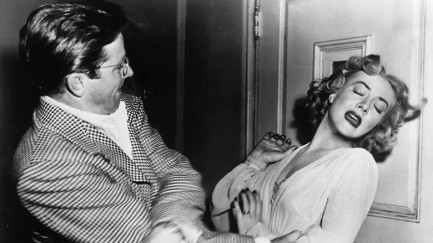 Audrey Totter reels under the attentions of Richard Basehart in 1949 Tension. We're thinking it was probably even more tense after this moment.
Audrey Totter reels under the attentions of Richard Basehart in 1949 Tension. We're thinking it was probably even more tense after this moment.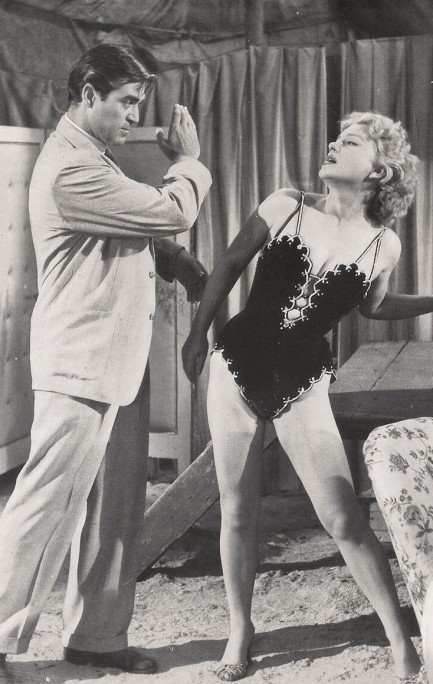 Anne Baxter tries to no avail to avoid a slap from heel Steve Cochran in 1954's Carnival Story.
Anne Baxter tries to no avail to avoid a slap from heel Steve Cochran in 1954's Carnival Story.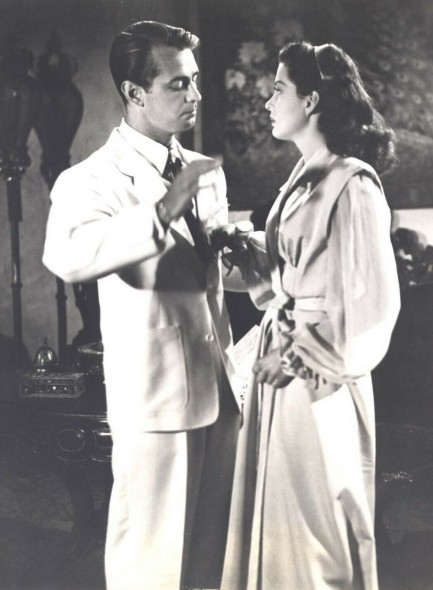
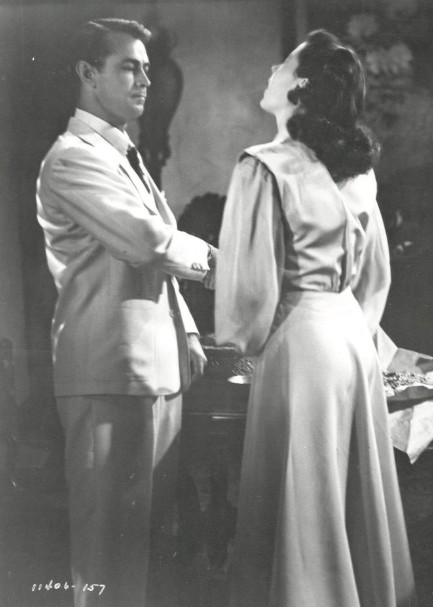 Though Alan Ladd was a little guy who Gail Russell probably could have roughed up if she wanted, the script called for him to slap her, and he obeyed in the 1946 adventure Calcutta.
Though Alan Ladd was a little guy who Gail Russell probably could have roughed up if she wanted, the script called for him to slap her, and he obeyed in the 1946 adventure Calcutta.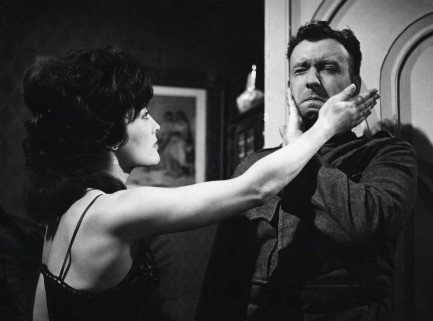 Peter Alexander guards his right cheek, therefore Hannelore Auer crosses him up and attacks his left in 1964's Schwejk's Flegeljahre, aka Schweik's Years of Indiscretion.
Peter Alexander guards his right cheek, therefore Hannelore Auer crosses him up and attacks his left in 1964's Schwejk's Flegeljahre, aka Schweik's Years of Indiscretion.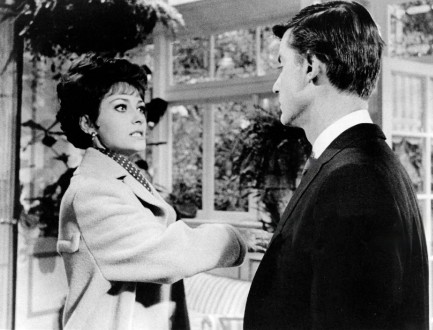 Elizabeth Ashley gives Roddy McDowall a facial in in 1965's The Third Day.
Elizabeth Ashley gives Roddy McDowall a facial in in 1965's The Third Day.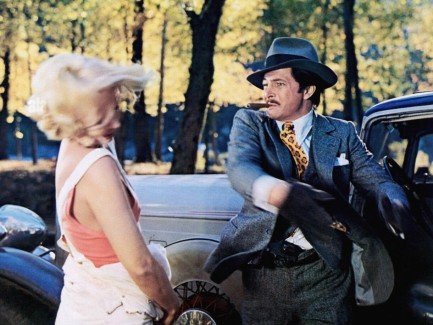 Tony Anthony slaps Lucretia Love in 1972's Piazza pulita, aka Pete, Pearl and the Pole.
Tony Anthony slaps Lucretia Love in 1972's Piazza pulita, aka Pete, Pearl and the Pole.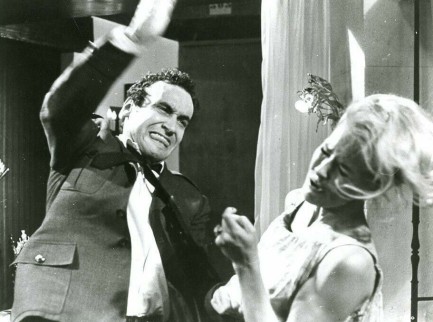 André Oumansky goes backhand on Lola Albright in 1964's Joy House.
André Oumansky goes backhand on Lola Albright in 1964's Joy House.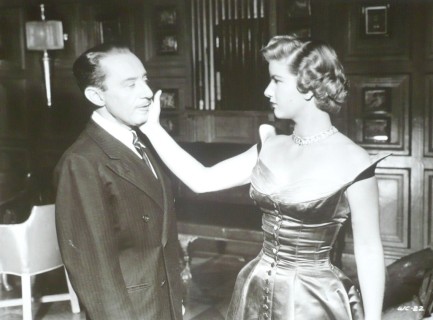 Frank Ferguson catches one from Barbara Bel Geddes in the 1949 drama Caught.
Frank Ferguson catches one from Barbara Bel Geddes in the 1949 drama Caught.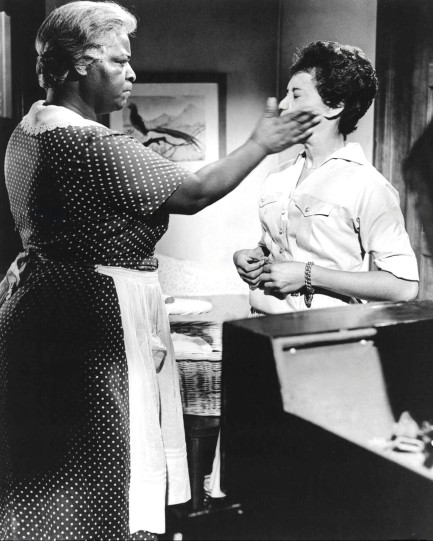 This looks like a real slap, so you have to credit the actresses for their commitment. It's from 1961's Raisin in the Sun and shows Claudia McNeil rearranging the face of Diana Sands.
This looks like a real slap, so you have to credit the actresses for their commitment. It's from 1961's Raisin in the Sun and shows Claudia McNeil rearranging the face of Diana Sands.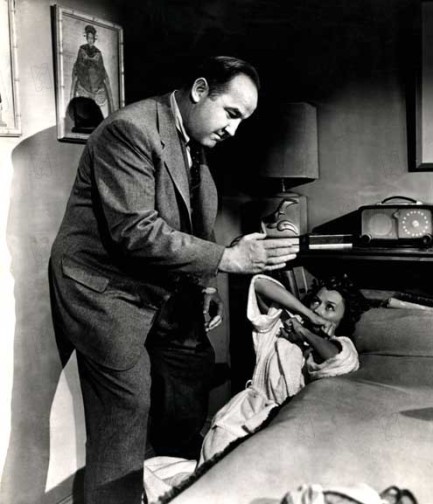 Gloria Grahame finds herself cornered by Broderick Crawford in 1954's Human Desire.
Gloria Grahame finds herself cornered by Broderick Crawford in 1954's Human Desire.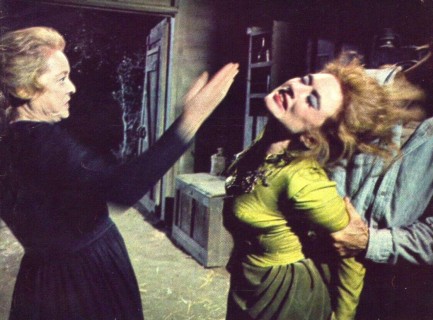 Bette Davis, an experienced slapper and slappee, gets a little assistance from an unidentified third party as she goes Old West on Amanda Blake in a 1966 episode of Gunsmoke called “The Jailer.”
Bette Davis, an experienced slapper and slappee, gets a little assistance from an unidentified third party as she goes Old West on Amanda Blake in a 1966 episode of Gunsmoke called “The Jailer.”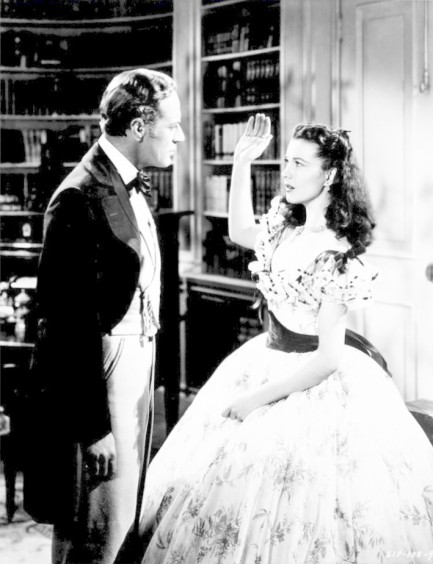 There are a few slaps in 1939's Gone with the Wind, so we had our pick. We went with Vivien Leigh and Leslie Howard.
There are a few slaps in 1939's Gone with the Wind, so we had our pick. We went with Vivien Leigh and Leslie Howard.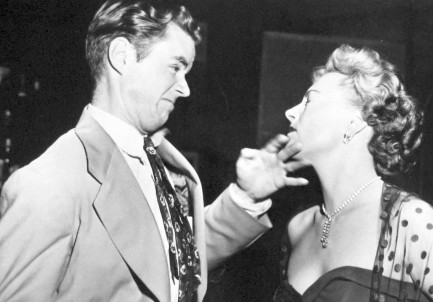 Virginia Field takes one on the chin from Marshall Thompson in Dial 1119.
Virginia Field takes one on the chin from Marshall Thompson in Dial 1119.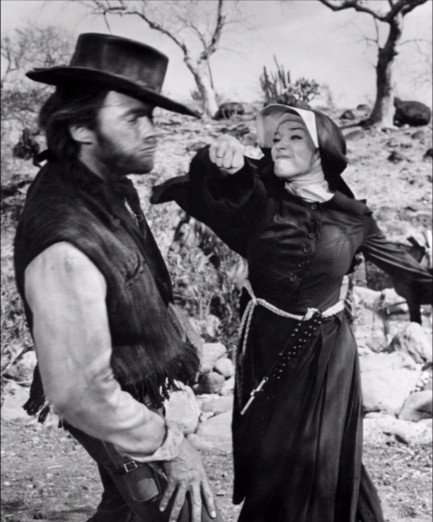 Clint Eastwood absorbs a right cross from nun Shirley MacLaine in 1970's Two Mules for Sister Sara.
Clint Eastwood absorbs a right cross from nun Shirley MacLaine in 1970's Two Mules for Sister Sara.| Femmes Fatales | Oct 26 2015 |

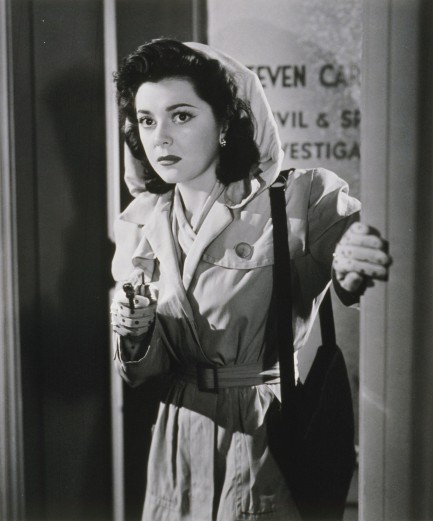
Canadian born actress Ann Rutherford is probably best known for playing Scarlett O’Hara’s sister Carreen in Gone with the Wind, but she starred in many films, and acted for more than forty years. The photo above was made to promote her role in Bermuda Mystery, a movie that’s little known today but which we decided we needed to see because: 1—we love the Caribbean; and 2—we love mid-1940s mysteries. It took a while, but we finally managed to find a copy. Unfortunately, the movie wasn’t set in the Caribbean. It takes place in New York City. But at least that makes Rutherford’s wardrobe appropriate. Why is the movie called Bermuda Mystery? We’ll tell you about it a bit later. 1944 on the photo.
| Femmes Fatales | Jan 30 2014 |

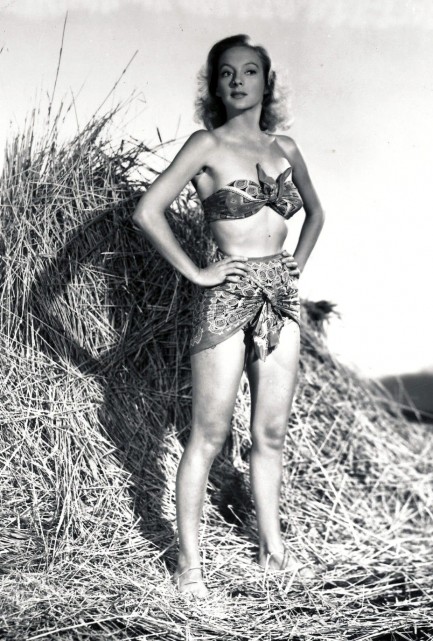
American actress Evelyn Keyes started in film in 1938 and came to wide attention in 1939’s Gone with the Wind. Later she appeared in movies such as Johnny O’Clock, 99 River Street, and The Seven Year Itch. This great shot pairing her with a haystack and wearing a swimsuit put together from handkerchiefs was probably made around 1950.
| Vintage Pulp | Sep 4 2012 |

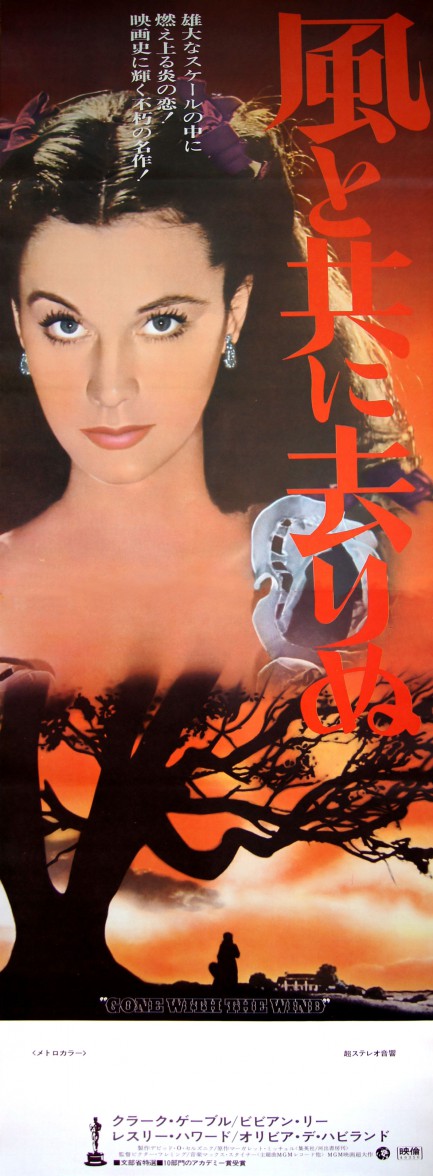
Above, a superb two-panel poster made in Japan for Gone with the Wind, with a great image of Vivien Leigh as the conniving Scarlett O’Hara. This film occupies a curious space in American culture, and a contentious one. Some people think it is an accurate portrayal of a genteel and elegant antebellum south in which slaves lived in more-or-less happy symbiosis with mostly kind masters; others think it’s a whitewash that glosses over the injustice, mass rape, and institutional savagery of a centuries-running crime against Africa.
Since the movie isn’t really about slavery, it probably shouldn’t be judged on its depiction of that terrible institution any more than Around the World in 80 Days should be judged on its depiction of ballooning. However, a swath of the American public does believe the film is broadly accurate, and it’s interesting how stubborn their notions are even after the appearance of more carefully researched depictions such as Stephen Spielberg’s Amistad and the ’70s miniseries Roots. While a tiny subset of house slaves might have led lives like those depicted in Gone with the Wind, hard evidence and serious scholarship have proven that the vast majority—inside and outside the house—endured horrific lives.
So that's where we stand, and really, reasonable people who've bothered to read a book or three on the subject stand there too. The ridiculous belief that slavery wasn't bad, or was even benevolent, will continue to hold sway over some people, and facts won't change their minds. That's just the way it goes these days. Speaking of factual depictions of slavery, you might try this underrated flick we talked about a few years ago. You can also check out some cool Gone with the Wind images here. The movie premiered in the U.S. in 1939 but did not play in Japan until years later—in fact, today, 1952.
| Intl. Notebook | May 6 2011 |

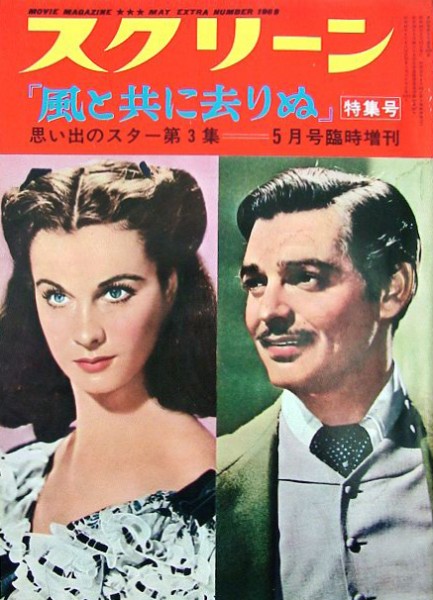
We found this old issue of the Japanese film magazine Screen that is totally dedicated to the American movie epic Gone with the Wind. It dates from May 1969, thirty years after the film was made, and our first assumption was that the movie didn’t play in Japan until then. But no, it premiered in the Land of the Rising Sun in September 1952. We were baffled for a while, and then we made a discovery—a musical version of Gone with the Wind entitled Scarlett opened in Japan in 1969. It was fully eight hours long, divided into two parts that were mounted as separate productions, and they were smash hits. We suspect this issue of Screen was produced because the musical generated great interest in the original film. We’ve already talked a bit about Gone with the Wind. We never liked it because it depicts a culture that was completely depraved as some sort of glorious nirvana. And because of its enduring popularity, many Americans’ concept of the antebellum south derives from what is little more than a fairytale. But that aside, the movie is undeniably well made, and we thought it worthwhile to share at least a few of Screen's photos. We’ll have more from this magazine later.
